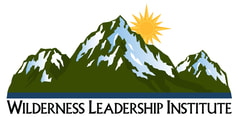Snowpack Summary April 8, 2023
Posted by Allen Giernet @ 6:30 am (this summary expires in 24 hours)
This summary applies to backcountry areas only.
The Bottom Line –
Wet Loose avalanches will become likely as the day warms. You will begin to find Wet snow instability on all aspects NE,E,SE,S,SW,W, to NW through the day as temperatures rise rapidly, especially on solar effected slopes except for the highest Northern elevations. Look for roller balls and pinwheels near rock bands and outcroppings as well as starting on firm snow that becomes soft and sinking into boot top depth. These are all signs of Wet Loose instability. Start early and finish early to avoid these problems or move to lower angel terrain or sheltered aspects. Mornings will start out fast and firm so bring crampons and ice axe with the skills to use them. Slide for life scenarios will be possible predawn and in the early morning hours before snow softens as the temperatures rise quickly.
Please share your observations with us at the avalanche center Submit Reports page.
Posted by Allen Giernet @ 6:30 am (this summary expires in 24 hours)
This summary applies to backcountry areas only.
The Bottom Line –
Wet Loose avalanches will become likely as the day warms. You will begin to find Wet snow instability on all aspects NE,E,SE,S,SW,W, to NW through the day as temperatures rise rapidly, especially on solar effected slopes except for the highest Northern elevations. Look for roller balls and pinwheels near rock bands and outcroppings as well as starting on firm snow that becomes soft and sinking into boot top depth. These are all signs of Wet Loose instability. Start early and finish early to avoid these problems or move to lower angel terrain or sheltered aspects. Mornings will start out fast and firm so bring crampons and ice axe with the skills to use them. Slide for life scenarios will be possible predawn and in the early morning hours before snow softens as the temperatures rise quickly.
Please share your observations with us at the avalanche center Submit Reports page.

Loose Wet avalanches are the release of wet unconsolidated snow or slush. These avalanches typically occur within layers of wet snow near the surface of the snowpack, but they may quickly gouge into lower snowpack layers. Like Loose Dry Avalanches, they start at a point and entrain snow as they move downhill, forming a fan-shaped avalanche. Other names for loose-wet avalanches include point-release avalanches or sluffs. Loose Wet avalanches can trigger slab avalanches that break into deeper snow layers.
Firm and Icy Surfaces firm and icy surfaces can cause long slide for life scenarios. Travel can be difficult to vary dangerous. Self arrest may be difficult to impossible. Micro spikes are not recommended for these conditions. Ice Axe and Crampons with proper training and skill are necessary tools for travel in these conditions. A slip and fall on these surfaces can lead to a long slide with tragic results.
General Summary
#1 Wet Loose – Significant warming and decreasing overnight freezes will increase the chance of Wet Loose instability. This problem will begin in the east and travel the compass rose through the day to the west as temperatures rise and sun effects the slopes. Start early and finish early while avoiding solar effected slopes. Watch for signs of wet snow as you travel and the day warms. Starting on firm snow that gives way to sinking to boot top depth is a sign of wet loose instability. Look for roller balls and pinwheels emanating from rock outcroppings and move to lower angel terrain and less solar effected aspects if you see these signs. Wet Loose avalanches will not generally bury you but can knock you off your feet and carry you through or over nasty terrain features with cataclysmic results. Be aware what is below you and rapidly changing snow conditions.
#2 Fast Firm conditions – likely in the early morning and predawn on all aspects especially at upper elevations. These conditions will pose the risk of slide for life scenarios until slopes are effected by temperature and sun. This hazard is the most prominent cause for rescues in our local mountains especially areas such as the Baldy Bowl. A slip and fall can result in an uncontrollable slide with potential catastrophic results. Be sure to bring proper equipment (ice axe & crampons) with the skills to use them. Be aware of snow surfaces you are traveling on and changes as you move through different aspects and elevations as well as what is below you. Change terrain if these conditions develop before you find yourself and a situation you can’t retreat from.
Weekend Outlook: Continued warming and little to no overnight freezing for the next couple of days will increase the possibility of Wet Loose avalanches. Fast and firm conditions in the mornings especially at upper elevations will pose the risk of slide for life situations until snow softens with warming temperatures.
Exercise caution if venturing out into the mountains and use avalanche protocols, travel with a partner and bring your beacon, shovel and probe.
Please share any information when you are out in the mountains. Even a photo is helpful. Submit observations to Submit Reports page.
#1 Wet Loose – Significant warming and decreasing overnight freezes will increase the chance of Wet Loose instability. This problem will begin in the east and travel the compass rose through the day to the west as temperatures rise and sun effects the slopes. Start early and finish early while avoiding solar effected slopes. Watch for signs of wet snow as you travel and the day warms. Starting on firm snow that gives way to sinking to boot top depth is a sign of wet loose instability. Look for roller balls and pinwheels emanating from rock outcroppings and move to lower angel terrain and less solar effected aspects if you see these signs. Wet Loose avalanches will not generally bury you but can knock you off your feet and carry you through or over nasty terrain features with cataclysmic results. Be aware what is below you and rapidly changing snow conditions.
#2 Fast Firm conditions – likely in the early morning and predawn on all aspects especially at upper elevations. These conditions will pose the risk of slide for life scenarios until slopes are effected by temperature and sun. This hazard is the most prominent cause for rescues in our local mountains especially areas such as the Baldy Bowl. A slip and fall can result in an uncontrollable slide with potential catastrophic results. Be sure to bring proper equipment (ice axe & crampons) with the skills to use them. Be aware of snow surfaces you are traveling on and changes as you move through different aspects and elevations as well as what is below you. Change terrain if these conditions develop before you find yourself and a situation you can’t retreat from.
Weekend Outlook: Continued warming and little to no overnight freezing for the next couple of days will increase the possibility of Wet Loose avalanches. Fast and firm conditions in the mornings especially at upper elevations will pose the risk of slide for life situations until snow softens with warming temperatures.
Exercise caution if venturing out into the mountains and use avalanche protocols, travel with a partner and bring your beacon, shovel and probe.
Please share any information when you are out in the mountains. Even a photo is helpful. Submit observations to Submit Reports page.
General Mountain Weather Forecast |
Weather Page Link
Click on the links below for the latest information
Click here for this Season's Snow Pack Summaries
To better understand the challenges and potential variability over the large area we are producing information for please read our Snowpack Summary - Format and Limitations
Disclaimer:
This Bulletin is designed to generally describe conditions where local variations always occur. Travelers are advised to exercise caution and make slope specific evaluations. As always, please treat this bulletin with appropriately guarded skepticism and make your own assessments. Help to provide more information to the community by reporting your observations
This Bulletin is designed to generally describe conditions where local variations always occur. Travelers are advised to exercise caution and make slope specific evaluations. As always, please treat this bulletin with appropriately guarded skepticism and make your own assessments. Help to provide more information to the community by reporting your observations
Latest Observtions
Click on the observation to go to the full report
|
Observation type
Avalanche Location - Wrightwood Date (yyyymmdd) - 20230402 Comment - Skied from Galena Peak with partner J.T. We were on the lookout for loose/wet slides and avoided exposing ourselves to large consequential lines. On our exit we witnessed this D1/R2? wet/loose slide. It began from a small point about 1/3 down the line, below a rock face being warmed in the sun. |
Observation type
Snowpack Location - Mt. Baden Powell Date (yyyymmdd) -20230402 Comment Weekend of March 31 - April 2 Climbed Baden Powell three days in a row to enjoy latest snowfall and observe the transition into our first days of spring like weather. Other than wet loose concern we observed large hanging cornices over leeward ridges on northern slopes above 9000’. Most are exceptionally large given our usual snowpack and are hanging and convex. Average cornice sizes are anywhere between 10-20’. There is already evidence of some failing due to the rapidly warming temperatures. Wet loose slides riddle BP’s drainages and are evident on all aspects, although none no larger than d1/r1, but that can change as the weather warms into April and May. Snow depths are still beyond measurement via my 280cm probe above 8500’ |
Observation type -
Snowpack Location - Cucamonga Peak Date (yyyymmdd) - 20230401 Comment - A group of us broke the trail from the ice house saddle half-way to the Cucamonga saddle (see attached picture) There was a 1ft-deep layer of wet snow over a layer of more compact snow all along. Lots of rollerballs forming. We pushed as the slope was less than 25-30 deg, but beyond where we stopped the slope is getting to 30-40 deg and we were concerned about the risk of wet loose avalanche on the northern and eastern aspects, with exposure underneath. |
Observation type
Avalanche Location - Baden Powell Date (yyyymmdd) - 20230331 Comment - Friday, March 31, 2023 This latest storm produced 15 cm of new snow at 6500’, 30 cm of new snow at 8000 feet and 55 cm of new snow at 9000 feet. Some poor bonding with the base layer at 15 cm was observed at 6500 feet while skinning this morning. That layer become much more cohesive as we gained elevation. We did not dig into the snowpack to investigate further. Rapid warming with our last day of March, as it seemed to feel like the first spring day of the season. Lots of roller balls, and pin wheels observed at peak daytime heating below at and 7000’. On our last run underneath Highway two at about 6400 feet on a westerly aspect. I triggered a wet loose slide that was congruent to poorly bonded interface we observed in the morning from the new snow that fell from day before. Further day time heating will likely trigger wet loose slides on exposed aspects at lower elevations. Above 8000’ the snow was still wintery and dry in shaded northern aspects. |
General Caution
You should always use safe terrain management and carry avalanche rescue equipment in the backcountry. Most avalanches are triggered by someone in the party or the victim. Practice with your rescue gear often and be prepared should the worst happen. Though we do not have an avalanche forecast center in this area as of yet, the information posted and shared here as well as the resources available on this site will help to make informed decisions for your backcountry travels. Use avalanche forecasts in your travels wherever available and be aware that avalanche ratings are general information. Elevation, location, geographic variability’s, slope aspect and angle all have effects on the particular area you travel in. This is only one piece of the information you should use in your decision making process. There is no substitute for avalanche education, for more resources and information as well as education please refer to our resources page.
You should always use safe terrain management and carry avalanche rescue equipment in the backcountry. Most avalanches are triggered by someone in the party or the victim. Practice with your rescue gear often and be prepared should the worst happen. Though we do not have an avalanche forecast center in this area as of yet, the information posted and shared here as well as the resources available on this site will help to make informed decisions for your backcountry travels. Use avalanche forecasts in your travels wherever available and be aware that avalanche ratings are general information. Elevation, location, geographic variability’s, slope aspect and angle all have effects on the particular area you travel in. This is only one piece of the information you should use in your decision making process. There is no substitute for avalanche education, for more resources and information as well as education please refer to our resources page.






















